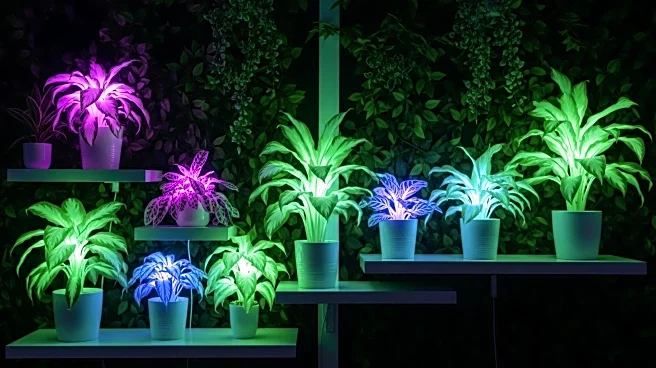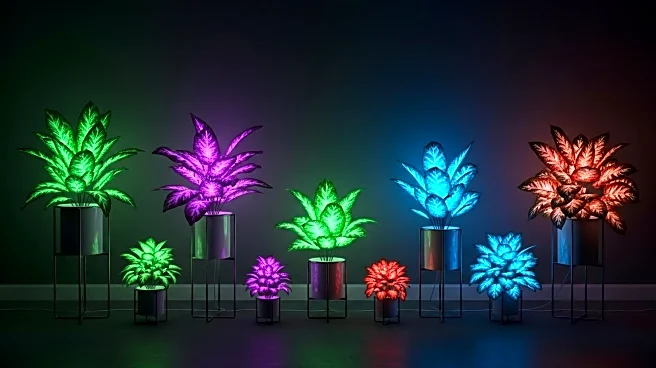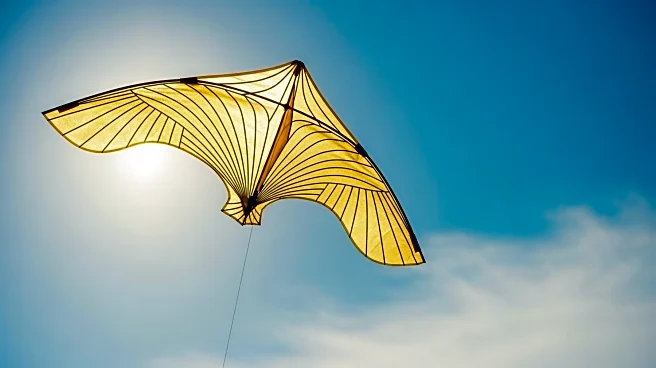What's Happening?
Chinese scientists have successfully created glow-in-the-dark, rechargeable houseplants by injecting succulents with phosphor particles. These particles absorb energy from light at one wavelength and re-emit it at another, allowing the plants to shine in various colors such as blue, red, and purple. This innovative approach differs from previous bioluminescent plants, like the genetically modified petunia that glows green, which was introduced in the U.S. last year. The researchers aim to use this technique to develop sustainable, plant-based lighting solutions.
Why It's Important?
The development of glow-in-the-dark houseplants represents a significant advancement in sustainable lighting technology. By utilizing natural plants as a source of illumination, this innovation could reduce reliance on traditional electric lighting, potentially lowering energy consumption and environmental impact. This breakthrough may benefit industries focused on eco-friendly solutions and contribute to the growing trend of integrating nature with technology. The success of this project could pave the way for further research and applications in sustainable design and energy efficiency.











